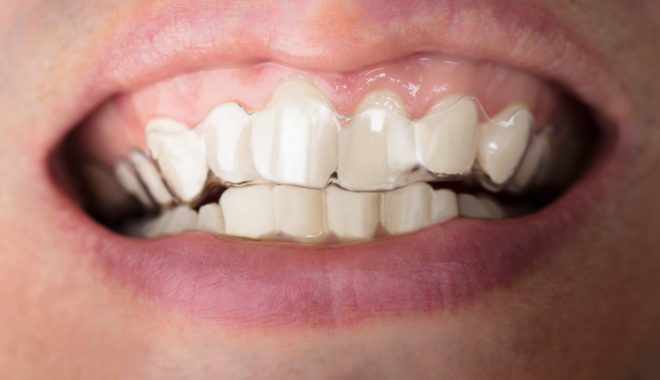How well your teeth fit together affects not only your smile’s appearance but also your oral health. Crooked, crowded, impacted, twisted, or gapped teeth can increase your risk of cavities, gum disease, and more. Trust the orthodontic experts at Penn Dental Family Practice to straighten your teeth, improve your bite, and give you your healthiest, happiest smile.
Orthodontics
Get Your Appointment Now
We look forward to serving you and your family.
- What Is Orthodontics?
- Who Is an Orthodontist?
- What Orthodontic Treatment Options Exist?
- What Problems Do Orthodontic Services Solve?
- What Are the Benefits of Orthodontic Treatment?
- Who Are Good Candidates for Traditional Braces?
- What’s the Best Age To Start Traditional Braces?
- Who Benefits Most From Invisible Aligners?
- What Should Orthodontics Patients Expect?
- Will Insurance Cover Orthodontics?
- Make Your Orthodontics Appointment
Orthodontics is the dental specialty focused on diagnosing and treating malocclusions (improper or “bad” bites) that result from irregularities in the teeth or jaw. The word “orthodontics” comes from the Greek words “orthos” (straight) and “dontics” (teeth).

An orthodontist is a dentist who specializes in straightening teeth and aligning bites. Beyond their four years of dental school, they have completed an additional two- to three-year residency program and have passed a licensure exam.

The two most common treatment options in contemporary orthodontics are:
Traditional Braces
Traditional braces use wires connected to metal or ceramic brackets affixed to the teeth to properly align and space the teeth. Elastics (rubber bands) provide additional force for moving teeth.
Worn for 24-36 months and adjusted every few weeks, traditional braces can cause minor but easily managed discomfort. Patients don’t remove braces once they are applied, contributing to timely and effective treatment.
Invisible Aligners
“Invisible braces” use clear, custom-manufactured plastic aligner trays to straighten teeth.
Aligners are more discreet and generally more comfortable than traditional braces and can make routine dental hygiene easier because they are removable. They also require fewer appointments and a shorter period of treatment (about 9-18 months). They do tend to be more expensive than traditional braces.
Your orthodontist will help you determine which orthodontic treatment best suits your needs and situation.
Orthodontics can address and remedy several oral health issues, including:
- Overbites and underbites
- Crossbites (horizontal misalignment of the teeth)
- Crooked teeth
- Overlapping teeth
- Dental crowding
- Rotated teeth
- Impacted teeth (teeth fully or partly trapped in the jawbone)
By correcting misalignment and malocclusion in adult and young people’s mouths, orthodontics can:
- Lower your risk of tooth decay, gum disease, and other oral health problems.
- Make your teeth easier to clean through brushing and flossing.
- Improve chewing and speech.
- Ease pain related to TMJ disorder.
- Improve the appearance of your smile, boosting your confidence and self-esteem.
Traditional braces can improve a wide variety of misalignments and “bad bites.” They are especially effective in complex cases calling for precisely controlled movement of teeth.
Patients of any age may benefit from traditional braces. Children, tweens, and adolescents may especially benefit because elements are bonded or cemented to the teeth and won’t be removed until treatment is done.
The American Association of Orthodontists recommends an initial screening at age 7. Many children will not need treatment at this age, but an early visit allows the orthodontist to note such visible issues as overbites and underbites, and to detect other potential problems using X-rays.
Orthodontics can begin for patients as young as 6 or 7. At this stage, orthodontists can use traditional techniques to hold spaces and perform other early interventions. Then, in adolescence, the orthodontist can apply brackets, wires, and other elements.
Not all young patients require full orthodontics immediately. Their treatment may start with a few appliances to accomplish minor tooth movement, then move on to more comprehensive measures as their smile develops.
Invisible aligners work best in mild or moderate cases. They also tend to be most effective for adults who never had orthodontic treatment as a child. Adults often prefer invisible aligners’ discreet appearance.
Because children’s teeth and jaws are still developing, orthodontists do not generally recommend that they use invisible braces.
Once they begin active treatment, traditional orthodontics patients visit the orthodontist every three to four weeks for adjustments. Patients inevitably experience some degree of discomfort after each tightening, but it usually passes after a day or so, and patients can use over-the-counter pain relief if needed.
Patients with invisible braces need to wear their aligners 20-22 hours each day. They typically visit the orthodontist every six weeks for adjustments. Some patients experience brief periods of slight discomfort, while others feel no discomfort at all.
All patients should expect to wear a retainer once orthodontic treatment ends. A retainer is a custom oral appliance that keeps teeth from shifting out of their new, proper alignment. Carefully following the orthodontist’s instructions regarding a retainer helps patients maintain treatment results for a lifetime.
Dental insurance plans typically cover traditional braces, especially for children, although, of course, you need to consult your particular plan. More insurers are beginning to offer coverage for adult orthodontics, as well.
At Penn Dental Family Practice, our financial coordinator can help you navigate the insurance process and understand your payment plan options before any orthodontic treatment.
At Penn Dental Family Practice, you and your loved ones will find expert, experienced orthodontists who use state-of-the-art materials and proven techniques to deliver patient-centered care.
Fill out the form below to schedule your appointment now:
Make An Appointment
